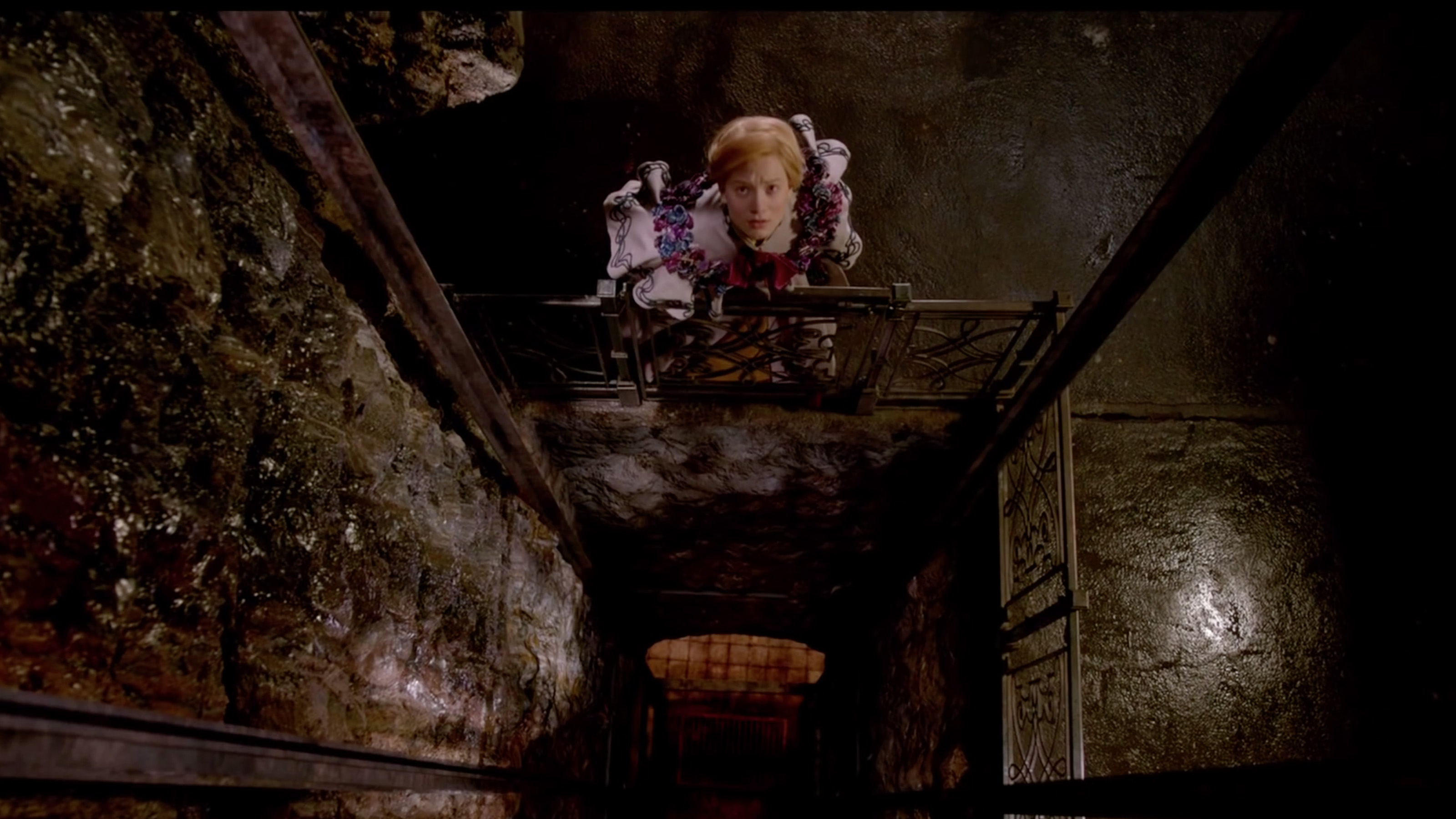“It’s not a ghost story, it’s a story with ghosts in it,” novelist Edith Cushing (Mia Wasikowska) says repeatedly in Crimson Peak—a message director Guillermo del Toro is intent on beating us over the head with in his newest film, a gothic haunted-house romance that feels more Edith Wharton than Edgar Allan Poe. This is a shame, since the ghosts are by far the most interesting part of Crimson Peak: Cushing also laments the publisher-mandated love story she must include in her manuscript, but it’s hard to imagine it could be as flaccid and uninspiring as the romance around which this film revolves.
Wasikowska’s character is a familiar trope: the smart-as-a-tack American girl with moxie to spare. Despite being a woman at the turn of the century, Cushing is more interested in getting published than in getting married—until she predictably falls in love. The object of her sudden affection is Sir Thomas Sharpe (Tom Hiddleston), a young British aristocrat who needs only to read and compliment one sentence of Cushing’s novel to transform her disdain into devotion.
Cushing meets Sharpe when he comes to her investor father asking for money, and she can tell from his outdated-but-expensive clothing that Sharpe was once wealthy and is now broke. This somehow piques her interest enough for Sharpe to succeed where Alan McMichael (Charlie Hunnam)—the smart, hunky, and kind doctor pursuing Cushing—has failed. One ballroom dance and a dead parent later, she’s moving to England to live in a creepy house with her creepy new husband and his creepy sister (Jessica Chastain).
In the absence of successful scares, it’s Cushing’s consistently terrible decision-making that makes Crimson Peak most like a traditional horror movie.
Fine enough, but Del Toro is actively playing against his strengths, focusing as he does on romance and histrionic dialogue and avoiding any real sense of tension altogether. In the absence of successful scares, it’s Cushing’s consistently terrible decision-making that makes Crimson Peak most like a traditional horror movie. Though ostensibly a mystery-romance in the vein of Hitchcock’s Rebecca, Crimson Peak telegraphs its ending at every turn; the film’s biggest twist is that the story plays out exactly as you expect it to.
Del Toro has always been better at setting the mood than telling a story (although, at his best, he does both well) and that holds true here. The film is atmospherically perfect. Its pitch-black and blood-red ghosts are unique and strikingly beautiful, if not very frightening, and production designer Thomas E. Sanders’s attention to detail is truly astounding. Everything in Sharpe’s dilapidated manor seems to live and breathe—and bleed, thanks to an underground deposit of deep red clay that seeps up through the snow surrounding the house.
But Crimson Peak’s breathtaking visuals deserve better than its halfhearted plot—because it’s a problem when a film’s set is more emotionally compelling than its characters. FL







